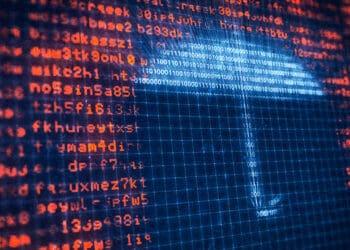Employees represent the most likely attack vector for your organization, but they also hold the potential to be one of your biggest strengths if training is what they need (and when they need it), says NAVEX’s Haywood Marsh.
Cybersecurity breaches are becoming increasingly sophisticated, and the consequences for organizations can be devastating. Beyond the financial losses, the reputational damage and the legal implications, the breach of trust with customers and clients can be irreparable. In the face of these threats, it’s crucial to recognize that technology alone can’t provide a foolproof defense. Instead, the human element within an organization plays a pivotal role in the ongoing battle against cyber threats.
The deceptive facade of cybersecurity
When we think of cybersecurity, we often envision complex networks of firewalls, intrusion detection systems and encryption protocols. These technological safeguards are undoubtedly crucial in fortifying an organization’s digital perimeter. However, they can only do so much. A cybersecurity strategy that relies solely on technology is like building an impenetrable fortress with an unlocked back door.
The human factor is one of the most glaring vulnerabilities in any cybersecurity setup. A 2023 report by Verizon found that 74% of breaches involved the human element — with people being involved either via error, privilege misuse, use of stolen credentials or social engineering.
Employees are the gatekeepers of an organization’s digital assets, often representing the chain’s weakest link. Cybercriminals are well aware of this fact and frequently exploit it. Phishing emails, social engineering attacks and even insider threats all target the human element of an organization.
Instead of the weakest link in a chain, companies should think of employees as providing a levee or firewall for the business. After all, employees are the first line of defense against cyber threats. We can effectively bolster our collective resistance to attacks by empowering and educating individuals within an organization. This shift in mindset emphasizes employees’ critical role in safeguarding sensitive information.
Everything You Need to Know About the SEC’s New Cybersecurity Rules
Following the release of much-anticipated cybersecurity reporting guidelines for public companies, questions may persist about specifics of the new rules. Attorney David M. Lynn of Morrison & Foerster dives into all the details.
Read moreDetailsThe continuous training imperative
Continuous training is one of the most effective ways to fortify this role for employees. This approach acknowledges that cybersecurity is not a static discipline but a dynamic one, constantly evolving to counter new and sophisticated threats. Employees need engaging, dynamic and, most importantly, up-to-date training.
Their attention wanes if the content remains static, as they’ve heard it all before. A disengaged employee opens the door to dangerous gaps in knowledge, leaving the organization vulnerable to evolving cyber threats. That’s where adaptive training steps in as the game-changer.
By tailoring content to individual learning styles, pace and current knowledge levels, adaptive training ensures that employees pay attention and absorb the latest information and best practices. It transforms cybersecurity education from a mundane task to an empowering experience, arming your workforce with the knowledge and skills they need to be an active line of defense in our ever-changing digital world.
Employees must be equipped with the knowledge and skills to:
- Identify threats: Employees need ongoing education about the various cyber threats they may encounter. For example, phishing emails and malware to social engineering and insider threats, became more sophisticated with social media and even more so now with the growing use of generative AI. Understanding the landscape is the first line of defense.
- Recognize suspicious activity: Training should empower employees to recognize the signs of suspicious activity, including spotting unusual email addresses, unexpected attachment types, or requests for sensitive information that seem out of the ordinary.
- Practice cyber hygiene: Employees should be required to use strong, unique passwords, enable multi-factor authentication and keep their software current. Indeed, organizations should make it easier for employees to use good hygiene than not.
- Respond to incidents: In a security incident, employees should know what steps to take. By promptly reporting the incident, employees can help mitigate damage, keep the incident from spreading to other company systems and prevent further breaches.
- Testing and simulations: Regularly conducting phishing simulations and other cybersecurity exercises can provide valuable insights into how well employees retain their training. It also keeps cybersecurity awareness fresh in their minds.
Training sessions should cover many topics, from basic cybersecurity hygiene, such as strong password practices and email etiquette, to more advanced topics, like identifying social engineering tactics and understanding the nuances of phishing attacks. Additionally, training should be tailored to the specific needs of the organization as well as roles and responsibilities of individuals within an organization. Ensuring that every employee is equipped with the appropriate knowledge to mitigate risks effectively is imperative to business health.
The role of leadership
Leadership within an organization sets the tone and plays a critical role in fostering a culture of cybersecurity. When leaders prioritize cybersecurity and demonstrate their commitment to protecting sensitive data, employees are more likely to take it seriously. Additionally, leaders can set an example by actively participating in training and adhering to best practices. Leaders should encourage an open and transparent atmosphere where employees feel comfortable reporting suspicious activity without fear of reprisal. Early detection and swift response can often prevent a minor incident from becoming a catastrophic breach.
In the battle against cybersecurity breaches, it’s essential to recognize that the real frontlines often lie within the organization itself — in the hearts and minds of its employees. While technology certainly plays a crucial role, it is no substitute for a well-informed and vigilant workforce.
Continuous training and cybersecurity awareness programs are not mere formalities but vital investments in an organization’s security posture. By addressing the employee firewall issue head-on, organizations can fortify their defenses, reduce the risk of breaches, protect the bottom line and ultimately protect their most valuable assets — their data and the trust of their stakeholders.




 Haywood Marsh leads the NAVEX IRM and NetClaim business units, where he brings experience in strategic planning, sales, marketing, product, customer success and operations to his role. Prior to NAVEX, Haywood led marketing, strategic/product planning and an inside sales team for a division of Danaher. He previously served in the Pentagon as a military strategy consultant and team lead for Booz Allen Hamilton, and ran a live military intelligence mission while serving as a soldier in the U.S. Army, among other roles. Haywood earned an MBA from the Kellogg School of Management at Northwestern University and a degree in international business from Virginia Tech.
Haywood Marsh leads the NAVEX IRM and NetClaim business units, where he brings experience in strategic planning, sales, marketing, product, customer success and operations to his role. Prior to NAVEX, Haywood led marketing, strategic/product planning and an inside sales team for a division of Danaher. He previously served in the Pentagon as a military strategy consultant and team lead for Booz Allen Hamilton, and ran a live military intelligence mission while serving as a soldier in the U.S. Army, among other roles. Haywood earned an MBA from the Kellogg School of Management at Northwestern University and a degree in international business from Virginia Tech. 









